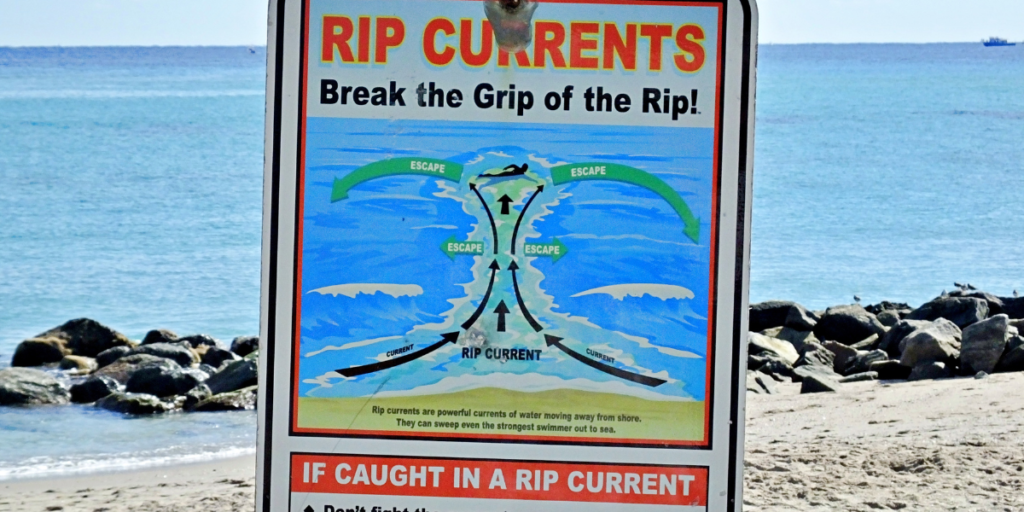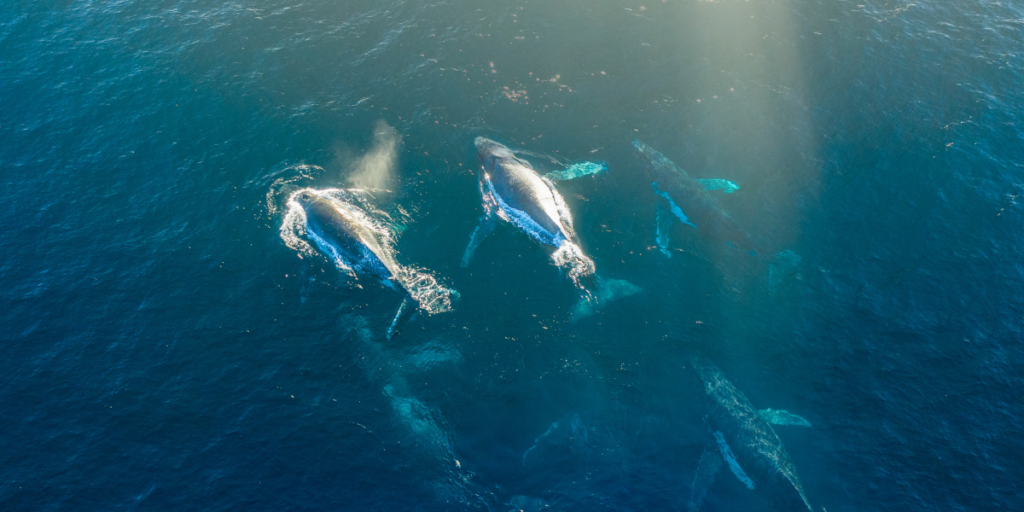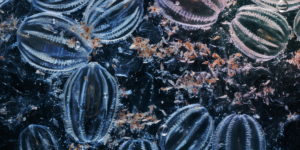Riding the Wave: Examining the Impact of Currents on Marine Animal Migration Routes
You are about to embark on a journey through the deep, mysterious world of marine animal migration.
Did you know that ocean currents play a vital role in guiding these creatures across vast distances? In fact, without them, many species would struggle to survive and thrive in their natural habitat.
As you delve deeper into this fascinating topic, you will discover just how much impact currents have on the behavior and movements of marine animals.
From the benefits of following predictable patterns to the risks of sudden changes in direction, you will gain new insights into the complex relationships between these creatures and their environment.
Through scientific tools and ongoing research, we continue to uncover surprising discoveries that shed light on the mysteries of ocean life.
So join us as we explore the wonders of marine animal migration and unlock the secrets hidden within our planet’s great blue expanse.
Key Takeaways
- Ocean currents play a vital role in guiding marine animals across vast distances, and without them, many species would struggle to survive and thrive.
- Following ocean currents allows marine animals to find optimal feeding and breeding grounds, save energy, and distribute nutrients throughout different areas of the oceans.
- Changes in water currents can pose significant risks to the migration patterns of marine animals, including altered breeding seasons, reduced food availability, and increased predator exposure.
- Understanding the movement and dynamics of ocean currents is crucial for marine animals to find optimal feeding grounds and maintain their energy balance during migration, and conservation strategies that involve following ocean currents are crucial for ensuring the survival and well-being of countless underwater creatures.

The Role of Ocean Currents in Marine Animal Migration
You’ll be amazed at how much help ocean currents provide to marine animals during their migration! Without these currents, many species would struggle to navigate through the vast and unpredictable oceans.
Oceanic navigation is a complex process that involves using various cues such as the position of the sun, stars, and magnetic fields. Marine animals have evolved to take advantage of these cues, but it’s often not enough when they are traveling long distances.
This is where ocean currents come in handy. These large-scale movements of water can carry marine animals thousands of miles without them having to expend much energy.
For example, some sea turtles use the Gulf Stream current to travel from their nesting beaches in Florida all the way up to feeding grounds near Canada. Similarly, many species of fish use ocean currents like conveyor belts to move between breeding and feeding areas.
The timing and direction of these migrations are heavily influenced by ocean currents which act as natural highways for marine life.
The Benefits of Following Currents
When you follow ocean currents, you can reap several benefits such as conserving energy while migrating. By using the natural flow of water to move, marine animals save precious energy that can be used for other activities like feeding and breeding.
Additionally, following currents can lead to finding optimal feeding grounds where plankton and small fish congregate due to the upwelling of nutrients caused by the current’s movement.
Finally, some marine animals follow specific currents that lead them to ideal breeding grounds where they can mate and reproduce successfully.
Energy Conservation
Don’t ignore the fact that conserving energy while swimming in ocean currents isn’t just for the eco-conscious hippies, it’s a matter of survival for many marine animals. As these animals migrate across great distances, they rely on the help of ocean currents to carry them along. By following these currents, they are able to conserve significant amounts of energy that would otherwise be spent on swimming against strong tides or waves.
To understand just how important energy conservation is for marine animal migration, consider these four points:
- Marine animals need to conserve as much energy as possible during their migrations because they often have long distances to cover and limited food supplies.
- Swimming against strong currents can be physically exhausting and use up valuable resources such as oxygen.
- By utilizing ocean currents effectively, marine animals can save up to 90% of their usual swimming costs.
- Conservation strategies such as following eddies (circular patterns in water flow) can allow marine animals to travel even further with less effort.
By taking advantage of natural ocean currents, many species of marine animals are able to make incredible journeys across vast distances without expending unnecessary amounts of energy. This not only helps them survive but also has ecological impacts by allowing them to distribute nutrients and other important elements throughout different areas of the oceans.
Understanding the importance of conservation strategies when it comes to following ocean currents is therefore crucial for ensuring the survival and well-being of countless underwater creatures.
Finding Optimal Feeding and Breeding Grounds
Optimizing their search for food and suitable breeding grounds is a critical task for many ocean-dwelling creatures. Feeding patterns of marine animals are often influenced by environmental cues, including the presence and movement of ocean currents. These currents can affect the distribution and abundance of prey species, which in turn affects the feeding behavior of predators.
For example, some marine mammals such as blue whales and humpback whales rely on krill as a primary food source. Krill are known to aggregate in areas where there is significant upwelling caused by ocean currents. As these currents bring nutrient-rich waters to the surface, it creates ideal conditions for phytoplankton growth which attracts krill.
Therefore, understanding the movement and dynamics of ocean currents is crucial for these animals to find optimal feeding grounds and maintain their energy balance during migration.
The Risks of Unexpected Changes in Currents
However, unexpected changes in currents can pose significant risks to the migration patterns of marine animals. These changes could be caused by natural phenomena such as El Niño or man-made factors like climate change and ocean pollution.
The potential implications of these changes are vast and include altered breeding seasons, reduced food availability, increased predator exposure, and ultimately a decline in overall population numbers.
To adapt to these changes, marine animals may have several strategies. Some species may alter their migration routes or timing to avoid areas experiencing current disruptions. Others may switch their preferred feeding grounds or prey items if their typical food sources become scarce due to changing water currents.
However, it is important to note that not all species have the ability to adapt quickly enough to keep up with these rapid shifts in environmental conditions. This highlights the urgent need for continued monitoring and protection of our oceans and its delicate ecosystem.

Scientific Tools Used to Study Animal Migration
Scientists have a variety of high-tech tools at their disposal to track the movements and behaviors of creatures as they journey across land, sea, and air. One of these tools is tagging animals with devices that can transmit data about their location, depth, temperature, and other variables. This allows researchers to map out migration patterns and understand how animals respond to changes in currents or other environmental factors.
Another tool commonly used by scientists is satellite tracking. With this technology, researchers can remotely monitor the movements of tagged animals from anywhere in the world. This has revolutionized our understanding of animal migration, allowing us to track individual creatures over vast distances and gain insight into their behavior in real-time.
By combining different types of data collected through tagging and satellite tracking, scientists are able to build a more comprehensive picture of how currents affect marine animal migration and make predictions about future trends.
Fascinating Discoveries and Ongoing Research
Get ready to be amazed by the fascinating discoveries and ongoing research surrounding the migration patterns of various marine animals. With new technologies and tracking methods, scientists have been able to uncover some incredible insights into how currents affect these highly mobile creatures.
Here are just a few of the most exciting findings:
- Some species, like sea turtles, use ocean currents as a sort of highway system to navigate long distances with minimal effort. By hitching a ride on these natural highways, they can conserve energy for other tasks.
- Other animals, such as whales and dolphins, are known to follow specific ocean currents in order to reach their preferred feeding grounds. This behavior is so consistent that researchers can predict where these creatures will be at different times of year based solely on current patterns.
- In addition to passive transportation or navigation strategies, some species actively swim against strong currents in order to reach their destination. One example is salmon, which must swim upstream against strong river currents in order to spawn. By studying how they accomplish this feat, scientists hope to better understand how marine animals adapt to changing environments over time.
Frequently Asked Questions
What are some specific marine animal species that rely heavily on ocean currents for migration?
Many marine animal species rely heavily on ocean current patterns for migration, including sea turtles and salmon. Understanding these patterns can help protect and conserve these animals, strengthening our sense of connection to the natural world.
How do ocean currents affect the hunting and feeding patterns of migrating marine animals?
Ocean currents play a crucial role in the hunting and feeding patterns of migrating marine animals. They can impact ecosystem balance by affecting food availability and distribution. Additionally, changes in ocean currents can have effects on reproduction, such as altering breeding grounds or migration timing.
Can sudden changes in ocean currents lead to long-term negative effects on marine animal populations?
You may not realize it, but sudden changes in ocean currents can have long-term negative effects on marine animal populations. The impact of climate change on ocean currents highlights the importance of protecting ocean habitats for migratory species.
How do scientists track and monitor the movements of migrating marine animals using technology?
To track and monitor migrating marine animals, scientists use advanced technology like satellite tags, acoustic receivers, and drones. These tools allow for precise data collection on movement patterns, behavior, and habitat use, aiding in conservation efforts.
Are there any potential solutions or management strategies in place to minimize the negative impacts of human activity on ocean currents and marine animal migration patterns?
To minimize the negative impacts of human activity on ocean currents and marine animal migration patterns, management strategies such as reducing plastic waste and regulating shipping can be implemented. Human impact must be carefully managed to mitigate harm to these ecosystems.
Conclusion
In conclusion, you now understand the crucial role of ocean currents in marine animal migration. Following these currents can provide a multitude of benefits for animals, including conserving energy and finding food sources. However, unexpected changes in currents can also pose risks to these animals.
To further study animal migration patterns, scientists use tools such as satellite tags and acoustic telemetry to track their movements and gather data. Through this research, fascinating discoveries have been made about the complex behaviors and adaptations of these creatures.
For example, researchers found that loggerhead turtles utilize a unique navigation strategy during their migration from nesting beaches in Florida to feeding grounds off the coast of North Carolina. By following surface currents along the continental shelf break, they’re able to conserve energy while also avoiding predation by staying out of deeper waters where predators lurk. This discovery highlights the intricate ways in which marine animals have adapted to make use of ocean currents for their survival.
As we continue to learn more about animal migration through scientific research, it’s important that we also work towards protecting our oceans and preserving these vital habitats for all forms of marine life.




